#yale school of architecture
Explore tagged Tumblr posts
Text
i wish i read more pretentious annoying books as a teenager so i wouldve cared enough about not going to the worlds fugliest uni to bother applying to other places
#i mean i did questbridge but like. the night before apps were due type questbridge#then i flunked 6 successive interviews. oh god OH GOD i forgot about the yale zoom interview where i had a apanic attack until this very mom#ent oh mh GOD. OH MY GOD. WHYYYY DID I DO THAT. MIND BOGGLING#i had no direction in life god. no wonder i flunked those things so hard oh my godddd its all flooding back YOU UNZIPPED ME OUGH AUGH#yale panic attack zoom interview. how could i forget. and then i didnt speak for like a week afterwards jesus christ#god. Yeah my school is like ridiculously ugly though its insane. my old dorm was kiiind of cool but only bc it was built in the 50s#most of the rest of campus besides the business pit is just like soviet russia tier architecture
2 notes
·
View notes
Text
i'm putting together a resume/cv for grad school applications and it's so funny to see all my qualifications put together like hm yeah maybe i do have a fighting chance of being accepted
#most of the time im like. ive done nothing of consequence with my life im so far behind#but seeing everything together im like. ok work girl#like. graduated top of my class from a top 10-15ish school in the usa / won a big scholarship 3/5 years / was student council president#/ admitted to an honor society / work published in two magazines / work exhibited in a museum for like a day / 4 architecture internships#one LGBT archive internship / arts initiative event volunteer for 5 yrs / won the grand prize in the only design competition i entered#and then after graduation got a job as a designer for schools and hospitals / wrote and passed 7 intense architecture exams#got my architecture licence two years after graduation and first in my graduating class to do so / spoke at a panel / got a promotion#am currently doing two research projects / and was selected to be on a team at work to design a very important kinda confidential project#<<< a team they keep reminding us was carefully selected to be made up of the best people in the firm kinda#NOT TO BRAG im just losing my mind how do i still feel like ive done nothing most of the time#((the answer to that is: my brother went to yale and majored in astrophysics and film and spanish on a full ride graduated with one of#the highest gpas in our province graduated college w a 4.0 (i only had 3.9 major/3.83 total) and works as an assistant to 5 ceos at a film#production company while writing and trying to sell his first screenplay. also my parents never really say they are proud of me lmao))
0 notes
Text

Howardena Pindell: Artist, (video), Virginia Museum of Fine Arts, Richmond, VA, 2018 [image: Howardena Pindell in her studio at Yale University School of Art and Architecture, 1966. Photo courtesy the artist and Garth Greenan Gallery, New York, NY]
Commentaries: VMFA Sydney and Frances Lewis Family Curator of Modern and Contemporary Art, Valerie Cassel Oliver, and MCA Chicago Marilyn and Larry Fields Curator, Naomi Beckwith
#art#photography#interview#video#howardena pindell#naomi beckwith#valerie cassel oliver#virginia museum of fine arts#garth greenan gallery#1960s#2010s
30 notes
·
View notes
Note
I love your writing soooooo much !!! I just NEED to read more about that modern royalty AU you posted yesterday
started sweet and flirty. got smutty. so it goes. touches of d/s dynamics, but pretty much all in vague terms. smut stars under the ~*~
part one here
~
Percy made her tapas. Annabeth was pretty sure that was the Spanish equivalent of her taking him to the Ikea food court.
Knowing Percy, he'd probably really enjoy that date, actually.
Either way, they were delicious. He spread them out on the coffee table in his private room, and they ate on the couch like Roman emperors. Annabeth appreciated the choice; it gave her a better opportunity to show off her legs, and Percy seemed more than willing to look.
He'd brought a bottle of Spanish wine, but neither of them had reached for it. She wanted to see if she liked him as much sober as she had tipsy.
Annabeth had had a crush on him once. They crossed paths at an Easter garden party when they were twelve, and she and Percy got up to some trademark mischief. The press was quick to name Annabeth a "wild child" despite her being very literally a child, but those youthful rebellions (stealing extra deserts and seeing who could get closest to the Queen of Spain without being noticed) had solidified her as "Sweden's sweetheart" to her people at least. That mattered much more to her.
They were kept apart after that.
Until they met on opposite ends of a mock trial case involving bribes, police entrapment, and a briefcase full of money. Yale's team always was better than Harvard's, despite her best efforts. But she and Piper were a rock star attorney-witness pair that constantly knocked Percy out of the top awards spot.
It was a testament to her skill that she even managed to stay focused when they went up against Yale. Because the cute twelve year old she'd once crushed on hard was now a very hot man. And the six years that had passed since their college days had only made him hotter. Strong jaw, Roman nose, dark hair, light eyes, muscular but not too much, well-done tattoos ...
Annabeth was cooked.
She had hoped she wouldn't find him as appealing when she was sober, but no. If anything it was worse.
"Bit old school to go with another royal, isn't it?" Her dad had asked her that morning when he showed her The Sun. (After about 15 minutes of ranting to staff about what an invasion of his daughter's privacy, that was).
All Annabeth could do was shrug and say, "He's barely royal. And we aren't going steady. He hasn't pinned me on the back of the school bus, or anything."
"I'm not that old," her father said with a laugh.
Annabeth reached for another bite. "I never asked. What did you study at Yale?"
"Oh, classics," Percy said, wiping his hands on a napkin. "Did a master's too."
"Really?" Annabeth asked. It seemed so impractical. She'd been pushed to do all sorts of pre-law, history, and international relations courses, despite her real passions for architecture and design. But she figured that was the trade-off to being born into the most extreme generational privilege.
Percy nodded. "I'm thinking about applying to Oxbridge for a Ph.D."
Annabeth smiled, and asked again: "Really?"
"I'm not just some big, hot, dummy," he said.
"I don't think you're dumb, Percy," Annabeth said.
"Thanks," Percy said. Percy had his charmer smile -- it was a bold, straight on, smile that was a little cocky, but mostly communicated that you were the center of his attention in that moment. And then he had a real smile, one that betrayed him and communicated real affection. It was softer, smaller, closed-lipped, and he usually looked away as it happened.
This was one of those.
"Do you know Greek?" Annabeth asked, resting a hand on his knee.
"Ancient," he said, before reciting a few lines Annabeth recognized. The roll of his tongue as he spoke the ancient language made her warm.
He paused right when the poem was getting good. "That was --"
"Goddess, sing of the cataclysmic wrath of great Achilles, son of Peleus, which caused the Greeks immeasurable pain and sent to many noble souls of heroes to Hades," Annabeth finished for him.
Percy smiled. "Didn't know you knew Ancient Greek."
Annabeth shrugged. "I'm hardly fluent, but I know the heavy hitters. I always preferred --" she recited a few lines in Greek herself. Percy was biting the inside of his lip and the tops of his cheeks had gone a bit pink.
"Tell me about a complicated man," Percy translated. "Muse," his gaze bore into her as if she were the muse, "tell me how he wandered and was lost when he had wrecked the holy town of troy, and were he went, and who he met, and the pain he suffered on the sea."
He rested a hand on her face, brushing her cheek with his thumb, before pulling her in. The kiss was soft, curious, almost romantic. She hummed as they pulled away from each other.
"I always thought you'd be more of an Odyssey girl," he said when they pulled away.
"What does that mean?" She asked, ready to be teased or insulted.
Percy just leaned back against the couch. "It means I think you have good taste and correct opinions," he said.
Well, he'd certainly figured out the right things to say to get her into bed.
Annabeth crawled onto his lap, straddling him, before pushing her loose blonde curls back and away from her face. Percy's hands settled on the backs of her thighs.
~*~
That Iliad thing only worked like ... 40% of the time. He couldn't believe it'd worked for her. But Percy should have guessed she'd know at least some of the classics. It was the kind of thing kids in their position got taught. It still worked though. And now he had Sweden's sweetheart back in his lap, short skirt, bare legs, grinding up against him.
"Can I touch you, princess?" He asked.
She nodded, and Percy's hand slipped under her skirt and pushed her panties to the side to get at her cunt. He smirked a little. Oh his little Iliad stunt had worked.
"Do you -- ah -- want to take them off?" Annabeth asked. "Or do you just think I'm so hideous you prefer if I keep my clothes on?"
He'd asked her to keep her gown on last night for at least the first round. It was deep, royal blue, strapless, glittery, and it was driving him wild all night. He asked her to ride him in it, and she had. It was an image Percy would never forget, even if they had ruined some of the inner layers of fabric.
"God, no, Annabeth," Percy said, pulling her in for a kiss. Hideous? Even as a joke it was an outrageous thing for her to say. "I just like messing you up. Getting you wet and rumpled. I like making this perfect princess do a real walk of shame back to her castle."
Annabeth's cheeks were flushed, but that might be because he'd found a spot that had her back arching, and had her grinding her clit against the heel of his palm.
"I'd have to be ashamed first. And I don't walk to my castle. I have a private jet," she said.
"And a callous disregard for the environment," Percy teased.
"I'm too important for business class," she said. But that was where her teasing ending. She pitched forward towards him, her lips pressing against his neck as she kissed and nipped at the skin. "Percy, talk to me," she whispered in his ear.
"Talk?" He asked.
"Talk dirty."
Percy panicked. He usually had a little dirty talk up his sleeve, but he'd used it all up on his little walk of shame spiel. He was, in reality, painfully earnest and romantic. It made for a great wedding toast, but not for dirty talking a hookup.
She spoke ancient Greek. What were the odds she also knew Spanish. Pretty high, he figured, probably pretty high. But ...
"[You're the most beautiful woman I've ever seen,]" he tried in a lusty tone. He'd spent his years in New York learning a more Latin American accent. It pissed his pretentious family off, but the Spanish lisp simply wasn't very sexy in his opinion.
"I like that," Annabeth said. "Am I supposed to know what you're saying?" She asked.
"No, that's part of the fun," he said. Thank god.
He went on. There were some dirty things in there, like how he planned to eat her out, and how he loved being inside her. And then that slipped so quickly into praising how beautiful and smart she was. How happy he was that she was here. How he'd wanted her for years. How she passed every expectation.
Corny and painfully honest shit like that, until she was gasping his name, thighs trembling, and getting impossibly wetter around his fingers. He simply kissed her as her orgasm finished, before slipping her panties back into place, swiping his finger over her now-covered cunt, to make sure they were a proper mess.
Annabeth was breathing hard in his lap, her gray eyes fixed on his. He expected her to say something. Something witty and maybe a little mean (he liked when she was mean. If she bullied him enough right now, he might just cum).
But she just leaned forward again, and captured him in a hot, desperate kiss.
~
"Should I return the favor in Swedish?" She joked between hot kisses.
She'd settled down into his lap, grinding her ruined panties against his clothed hard cock. He needed her, she could tell. She'd given him head this morning before they parted ways and before The Sun exposed their hookup. She'd become well acquainted with what a desperate, needy Percy looked like.
Really, she wasn't going to speak Swedish to him unless he asked. She knew it wasn't the hottest language out there.
She hadn't meant to, but she'd set Percy up for failure, and herself up to be insulted.
"That's alright," he said. A good start. "It makes you sound like a muppet." Horrific ending.
Jokes about meatballs and flat pack furniture? Fine, respectable even. The Swedish Chef? A joke she heard enough at her all-girls boarding school.
Annabeth frowned and got off his lap.
"Wait --" he said. She just stood and walked away from the couch, choosing to instead snoop around his room while she decided what her next move was. "Annabeth, I'm sorry. That was too far."
"It was," she said.
There was a large, blue velvet box on his dresser. She knew what boxes this size usually held. She opened it. She knew it was the Prussian Diamond tiara that belonged to his aunt, but she played dumb.
Annabeth held up the tiara (carefully). "How many other princesses join you in here?" She asked.
Percy stood and walked over to her. He took the tiara out of her hands. "It's my aunts. My cousin asked me to make sure it made it to the event so she could wear it, and then she canceled. Said she had some punk concert at a Berlin leather bar or something."
The Spanish princess was so much cooler than she was.
She thought Percy would move to put it back, make sure this heirloom of his country stayed safe, but instead, he placed it on her head.
"You're the only princess, I promise," he said. "Sorry for making fun of you and your national language," he said, before kissing her gently. "I didn't mean to hurt your feelings like that."
Annabeth decided to forgive him, and pick up on their little game.
"It doesn't seem like you respect my country very much," she said, the confidence in her voice returning.
"I do," he promised, pressing his body up against hers, and pressing her back into the dresser behind her. He buried his face in her shoulder, kissing whatever skin he could find.
"Prove it," she said. "Bow."
She felt a slight shift in Percy's demeanor. He was going to yield to her, and just like that, too.
Percy stepped back, held his back straight, and dropped his head quickly.
"Better than that," she said.
He rested his forearm across his torso, before bending at the waist.
"Lower," she instructed. He hinged at the hips. Still not right. "Get on your knees," she told him. Percy dropped.
He watched her from his spot on the floor, big green eyes empty of anything but desire. She would have fun with this, she was sure.
Annabeth unbuttoned her shirt before tossing it aside. Then her bra. she shimmied out of her skirt, and then dropped her panties, kicking them towards the pile. She left the Spanish queen's tiara on. Annabeth had always liked breaking the rules, and she had never been a fan of Percy's aunt.
Annabeth hooked a leg over Percy's shoulder, getting his head between her legs.
"Please," Percy begged.
Annabeth smiled. "Go ahead."
~
Annabeth was wise enough to return the tiara to the box before Percy tossed her on the bed to eat her front to back. She'd never had anyone play with her ass in any way, so when his tongue slipped back there ... well, she was surprised he enjoyed it so much, and really surprised she enjoyed it so much. Annabeth was also pretty sure Percy nearly came from rutting against the sheets as she came on his face a third time.
"I lied to you before," Annabeth said with a giggle as Percy washed his face and mouth before she finally let him inside her. "My dad is furious about the pictures, and demands you marry me to preserve my honor."
Percy stepped out with a smile on his face. She'd peeled his clothes off at some point, so he was all tattoos, muscle, and hard cock.
"You enjoyed that so much you're going to marriage trap me Bridgerton-style?" He asked with a grin.
Annabeth pulled him back into bed. "I just might have to. Where did you learn how to do that?" She asked.
Percy paused and tilted his head side to side as he decided what to say, before landing simply on: "Gay sex, mostly."
Annabeth offered a shocked, open mouthed smile. "Oh!" she said.
"Is that okay?" He asked, twirling a curl around one of his fingers.
"Perfectly fine," she promised, "I just didn't expect you to be so frank."
"Frank and I did do that a lot," he said. She didn't know who Frank was, or if he was even real, or just a character he made up for the joke. "You're sure it's fine? Being with a bi dude?"
Annabeth giggled. "I went to an all-girls boarding school, Percy, I've had gay sex too." More than straight sex probably.
"I had a feeling you and Tristan McLean's daughter weren't just very good friends," he teased.
"Well, duh," Annabeth confessed. She and Piper were very good friends now. College was a different story.
Annabeth rolled onto her back and reached a hand out for him.
"What is it, princess?" He asked.
"You've been very patient," she said. Percy nodded. "Do you want me to blow you or do you want to fuck me?" She asked, offering him the choice.
Percy crawled on top of her before kissing her. He'd made such a sweet submissive, and she wondered if she could draw that out of him more. She'd be willing to bet it wasn't uncharted territory for him.
But he seemed different now. He held her wrists in her hands and pinned them over her head.
"Oh," she whimpered. Percy smirked down at her, as if to say gotcha. How he'd clocked her submissive streak too, she couldn't be sure.. But it was all an added bonus. The government wanted her to find a husband. She really just wanted a talented switch to take the edge off at the end of the day. She figure out romance some other time.
With each passing moment, Annabeth became more and more sure she needed to marriage trap this man, Bridgerton-style.
But while he rocked himself inside her, he started speaking Spanish again. So many sweet and lovely things about how beautiful she was, how much he adored her, how long he'd desired her. She might not have to marriage trap him. She might just have to date him, old school royal-on-royal style.
She'd confess to speaking Spanish in the morning. Right now, she just wanted to know what he said to her when he wasn't worried about winning their little games.
32 notes
·
View notes
Text
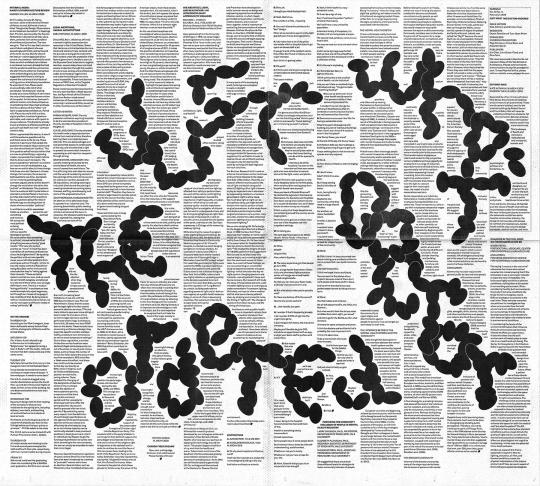
Yale School of Architecture
351 notes
·
View notes
Text
First Lady's education.
Mrs. Barbara Bush graduated from Yale University, where she was a member of Kappa Alpha Theta, with a bachelor of arts degree in Humanities and earned a Master in Public Administration from Harvard Kennedy School as a fellow with the Center for Public Leadership
Mrs. Hilary Clinton--ellesley College years. In 1965, Rodham enrolled at Wellesley College, where she majored in political science. During her first year, she was president of the Wellesley Young Republicans.
Mrs. Laura Bush--- Born in Midland, Texas, Bush graduated from Southern Methodist University in 1968 with a bachelor's degree in education, and took a job as a second grade teacher. After attaining her master's degree in library science at the University of Texas at Austin, she was employed as a librarian.
Mrs. Michele Obama--‐he majored in sociology and minored in African-American studies, graduating cum laude with a Bachelor of Arts in 1985 after completing a 99-page senior thesis titled Princeton-Educated Blacks and the Black Community under the supervision of Walter Wallace.
Mrs. Jill Biden--- Biden has a bachelor's degree in English from the University of Delaware and master's degrees in education and English from West Chester University and Villanova University, and returned to the University of Delaware for a doctoral degree in education
Mrs. Melanie Trump--- Melania Trump didn't receive a college degree in design and architecture at the university in Ljubljana, Slovenia, which her biography in the Republican National Convention program claims she had obtained.
#college education#college student#educator#educators#black literature#black tumblr#black excellence#black community#black girl magic#girl magic#educated women
13 notes
·
View notes
Text


Since 1974 the classicist Villa at Am Römerturm 3 in Cologne is the home of two generations of Kraemer architects: rebuilt by Friedrich Wilhelm Kraemer, one of the founding fathers of the Braunschweig School of Architecture, until 1999 it accommodated Kraemer Sieverts & Partner (KSP), one of Germany’s largest architect offices. In 1984 Kaspar Kraemer, son of Friedrich Wilhelm, became one of the firm’s partners. He left the partnership in 1999 and after the end of a half-year no-competition clause started his own firm in this very building: Kaspar Kraemer Architekten who on July 1 celebrated their 25th anniversary. This occasion, that coincides with the founder’s 75th birthday, is reason enough for a retrospective look at the successful history of the office in the form of a comprehensive publication: “Kaspar Kraemer Architekten - bauen zeichnen denken“, published recently by Wienand Verlag, is a thick tome covering some 75 buildings and projects from 25 years of architectural production. But the book is more than just an exhibition of the firm’s portfolio as it also contains extensive and fairly intimate interviews conducted by David Kasparek with Kaspar Kraemer. In five thematic blocks thematic blocks interviewer and interviewee discuss Kraemer’s upbringing in architect’s household where architecture wasn’t a topic at the lunch table, his student days in Darmstadt and Yale and the influence especially the US had on him as well as his first steps in his father’s firm. In the further course of the interview Kraemer also explains why he eventually left KSP, his active engagement in the Bundesverband der Freien Berufe (BFB) and his three term presidency of the Bund Deutscher Architekten (BDA).
Following its subtitle, which translates to „building drawing thinking“, the book not only covers a wealth of Kraemer’s projects but also includes a selection of his beautiful drawings and speeches/lectures. In the latter Kraemer honors i.a. his father but also discusses e.g. Schinkel’s Italian journey. Consequently, the book possesses a very personal note that together with the comprehensive work catalogue makes it an outstanding publication that is warmly recommended!
#kaspar kraemer architekten#architecture book#book#monograph#wienand verlag#contemporary architecture#german architecture
25 notes
·
View notes
Text
New York
Annabeth picked at the flowers on the table, waiting for someone who probably won’t show. She was at a coffee shop, waiting for her date she met online. It’s not even worth remembering which app it was from, whoever was going to show, would show. (Or not)
Eventually a ruggedly handsome man ushered in, going up to every woman in the place and talking to them.
“Are you Anna Elizabeth?” He asked, hopelessly.
“Yes, but I prefer to go by Annabeth.” She said.
“Awesome. I’m Percy.” He smiled wide.
“Oh.” Was all she managed, trying not to judge him.
“I’m sorry I was late. I’m from New York originally and San Francisco has a very different layout than the city.” He chuckled, sitting down across from her.
“I lived in New York for some time, it’s not too different.” She held her head high, maybe a little peeved at him for blaming his own incompetence on something that has no real ability to change.
“Oh, cool, where did you live? I grew up in Brooklyn but bounced around Manhattan and the Bronx for the past couple of years. My Ma lives on the upper east side now.” He smiled genuinely, which might have warmed her insides a bit more than she’d like to admit.
“I grew up in a town just out of the city, Scarsdale? Maybe you’ve heard of it?”
“Oh damn, that’s, like, close to Yonkers and Mamo? Right?” He smiled.
“Yeah.”
“That’s awesome, when did you leave?”
“Before I moved out here for school. I went to Berkeley for architecture.” She gripped her cup.
“Nice, I never went to college, too expensive.” He flushed.
“It’s never too late, you know.”
“Yeah, which is why I’m not worried. Like, my buddy, Jason, he’s been a Yale man since he was born. Guess where he ended up?”
“Yale?”
“SUNY Oneonta.”
“Oh, that’s—”
“Nothing like Yale, yeah, that’s what I said when he told me.” Percy’s eyes crinkled endearingly as he spoke about his friend, and joked with her.
“So, what brought you to San Fran, then, Percy?” Annabeth asked, genuine curiosity flooding her. He seemed like such a New Yorker, born and raised, that it didn’t make sense as to why he would leave.
“I still think of it as where I live, but for now, I’m out here to help my buddy Grover move into his internship. I don’t know, really.”
“You just go on random dates?”
“For fun, yeah.”
“That’s….” She wasn’t really sure.
“Weird?”
“Yeah.” She giggled, relieved he said it.
“What can I say? Some might say I’m a masochist.”
“Some.” She took a sip of her drink.
“Some might say that the ones that don’t immediately get up, are as well.” He whispered.
“Oh, well, I— I just like coffee.”
“If you ever find yourself in New York you should give me a call.” “I will.”
#percy jackson#annabeth chase#pjo#percabeth#annabeth is my baby#percabeth fic#percy jackson and the olympians#heroes of olympus#please#drabble#unfinished one shot with relatively nice stopping point
35 notes
·
View notes
Text
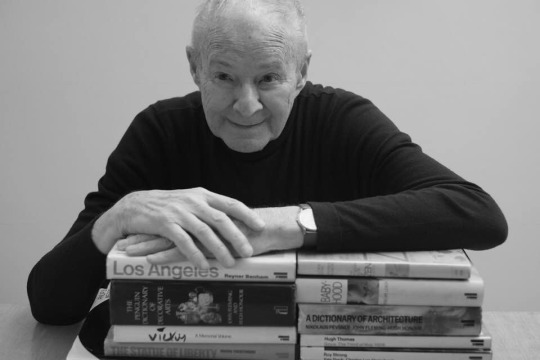
Gerald Cinamon
Chief designer for Penguin Books with a flair for pacing illustrated nonfiction, such as with Pelican’s Style and Civilization series
Gerald Cinamon, who has died aged 93, was one of the most skilled book designers of his generation. For 20 years from 1965 he was Penguin Books’ main designer of arts and architecture titles, becoming its chief designer in the mid-1970s.
A master of the paste-up method of layout, Cinamon was particularly adept at pacing illustrated books. From one spread to the next he would shift visual emphasis from vertical to horizontal, wide-angle to close-up, empty to full, synchronising these switches of treatment with key points in the text.
His debut for Penguin in 1961 coincided with two key events for the company: its acquittal in the Lady Chatterley’s Lover trial, and its employment of Germano Facetti, who recharged its cover designs for a new decade. But it was Kaye Webb, new editor at the Puffin imprint, who instigated the body of work for which Cinamon would become best known.
Webb had compiled a volume of her husband Ronald Searle’s St Trinian’s cartoons, and handed Cinamon, then a freelancer, “a box of jumbled clippings” from which to create a Penguin edition. He would paste up layouts at his kitchen table in Notting Hill, west London, surrounded by manuscripts, proofs and the aroma of Cow Gum, downing tools when his daughters returned from school.
The St Trinian’s Story (1961) led to further commissions for illustrated Penguins, and Cinamon unintentionally became a specialist in this field, at a time when letterpress was rapidly being replaced by offset litho as the means of printing books.
Where type and images had previously occupied two discrete planes – pictures on their own pages, often on coated art paper – litho enabled designers to place picture and text side-by-side, and Cinamon took advantage of this, interweaving halftones and line images with set type to make a verbal–visual narrative. His flair for sequencing nonfiction books led him to become the main designer of Pelican series of the 60s and 70s such as Style and Civilization and The Architect and Society.
The integrated method was also crucial to John Berger’s Success and Failure of Picasso (1965). There the author indicated precise points within the text where images were to be placed. When Cinamon inevitably found that this was not always possible, Penguin dispatched him to Geneva to resolve the layout with Berger.
In 1966 Penguin launched a hardback imprint, for which Cinamon designed A Fortunate Man: The Story of a Country Doctor, written by Berger and with photographs by Jean Mohr. The contrast between these two books for Berger demonstrates the span of Cinamon’s repertoire, despite the contextual similarities (same author, same publisher, single-colour print, a hand-held format).
Where Success and Failure’s layout rolled line by line with Berger’s polemic, A Fortunate Man’s images did not correlate with points in the text, and this allowed Cinamon to “write” the text–photo combinations, and the overall rhythm, in his own way. His arrangement is particularly effective in contrasting man with his rural environment: 45 pages pass before a human figure appears in the photographs.
Though sometimes categorised as a proponent of the objective, modernist Swiss style of graphic design, Cinamon’s solutions to briefs were far broader than that tag implies. His colleague Tony Kitzinger remembers his outlook as being “Swiss, tempered by New England”.
Born in Boston, Massachusetts, Jerry was the younger son of Pearl (nee Hirschberg) and Max, a liquor salesman. He initially studied at Massachusetts School of Art, and in 1953 joined the US Navy. He was then accepted by the department of graphic arts at Yale University, where his teachers included Alvin Eisenman, Armin Hofmann, Norman Ives, Josef Albers, Herbert Matter and Paul Rand.
Graduating in 1957, Cinamon received a Fulbright scholarship for the Ecole des Arts et Métiers in Paris, but found the approach there outmoded, so drove to Switzerland to study further with Hofmann in Basel. He was thus influenced first-hand by several key strands of the modern movement, from the Bauhaus to the new American advertising.
On the way home from Europe he met Diana Philcox, a recent textiles graduate from the Central School of Arts and Crafts in London. In New York Cinamon freelanced for publishers, and took up a one-year contract at Standard Oil of New Jersey (subsequently Exxon). In 1959 he and Philcox married, and in the following year moved with their twin baby daughters to Britain. Cinamon’s first clients in London included New Left Books and the Jewish-interest publisher Soncino.
After more than 20 years with Penguin, he left in 1985 to form a partnership with Kitzinger, who said of his former partner: “When I think of Jerry I do not see the kind of designer who shuffles little bits of paper around on a sheet. He would know, in advance, what he was realising.”
In 1987 Cinamon guest-edited a special issue of the trade journal Monotype Recorder in memory of Hans Schmoller, the exacting production director at Penguin (1949-76), who had been a “father figure” to him. He also wrote on the work of artist-designers including Talwin Morris, Ben Shahn and Emil Rudolf Weiß.
His biography of the type designer Rudolf Koch (2000), includes an apparently stray anecdote about a “young Berliner” who in 1933 had applied to become one of Koch’s students but had been turned away. The young Berliner was Schmoller.
Cinamon’s third daughter, Hannah, died in 2023. He is survived by Diana, their daughters Sara, Kate and Beth, eight grandchildren and a great-granddaughter.
🔔 Gerald Earl Cinamon, graphic designer and author, born 27 July 1930; died 15 February 2024
Daily inspiration. Discover more photos at Just for Books…?
13 notes
·
View notes
Text

Charles Henry Alston (November 28, 1907 – April 27, 1977) was a painter, sculptor, illustrator, muralist, and teacher who lived and worked in Harlem. He was active in the Harlem Renaissance; he was the first African American supervisor for the Works Progress Administration’s Federal Art Project. He designed and painted murals at the Harlem Hospital and the Golden State Mutual Life Insurance Building. His bust of Martin Luther King Jr. became the first image of an African American displayed at the White House.
He graduated from DeWitt Clinton High School, where he was nominated for academic excellence and was the art editor of the school’s magazine, The Magpie. He was a member of the Arista, National Honor Society and studied drawing and anatomy at the Saturday school of the National Academy of Art. In high school, he was given his first oil paints and learned about his aunt Bessye Bearden’s art salons, which stars like Duke Ellington and Langston Hughes attended. He attended Columbia University, turning down a scholarship to the Yale School of Fine Arts.
He entered the pre-architectural program but lost interest after realizing what difficulties many African American architects had in the field. After taking classes in pre-med, he decided that math, physics, and chemistry “was not just my bag”, and he entered the fine arts program. During his time at Columbia, he joined Alpha Phi Alpha, worked on the university’s Columbia Daily Spectator, and drew cartoons for the school’s magazine Jester. He explored Harlem restaurants and clubs, where his love for jazz and Black music would be fostered. He received a fellowship to study at Teachers College, where he obtained his MA. #africanhistory365 #africanexcellence #alphaphialpha
3 notes
·
View notes
Text

HIGH CONTRAST CARPET
I love a good pop of color!
The Yale School of Architecture (designed by Paul Rudolph) has the iconic paprika orange carpet that contrasts beautifully against the textural corduroy concrete walls.
This image is of the Haas Library.
Source: Yale Library
2 notes
·
View notes
Text
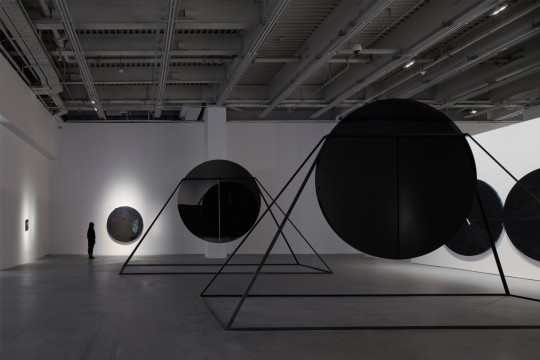


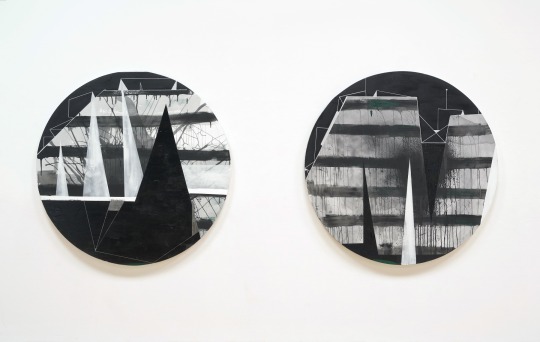






Torkwase Dyson (born 1973, Chicago) received a BFA from Virginia Commonwealth University in 1999 and MFA from Yale School of Art in painting/printmaking in 2003.
Working in multiple mediums, Dyson describes herself as a painter whose forms address the continuity of ecology, infrastructure, and architecture. She merges ideas such as site and built environments, nature and culture under the rubric of environmentalism. Fascinated with transformations, ambiguities and environmental changes that place these subjects in relationship to each other, her work revolves around investigating our connections to imagination, materiality, geography and belonging.
14 notes
·
View notes
Text
ok grad school list: the AA (dream), ucl bartlett, yale, harvard, columbia, cornell (i want to reject them out of spite but also. if i got in i would attend), delft, u of t, tu berlin, eth zurich maybe? i need more european ones on the list
#trying to avoid going to school in america again.#unfortunately all the programs that speak to my heart and soul are in america#the yale one is free though#and im technically yale legacy sooooooo#anyways once i get my architecture license and move to new york. grad school prep begins in earnest
0 notes
Text
The New Formalist: Edward Durell Stone
This is the second part of a two-part post. Read part one.
Stone’s Academic Career
During the late 1940s into the early 1950s Stone was an “associate professor of architecture at the Yale University School of Architecture” (2). His reputation allowed him to connect with other prominent architects in academia such as Walter Gropius at Harvard University’s Graduate School of Design, and Pietro Belluschi, dean of MIT’s School of Architecture and Planning. He also guest lectured on architecture at Cornell, Princeton, and Stanford. (2)
A New Woman Brings a New Influence to Edward Durell Stone’s Life
Edward Durell Stone and his first wife, Sarah, divorced in 1952. After his divorce, while on a transatlantic flight, Stone found himself seated next to “Maria Elena Torchio, a fashion writer… and proposed to her before the plane landed” (1). The couple were married in 1954 and “would have two children, Benjamin Hicks Stone III and Maria Francesca Stone” (2).
Stone’s Pivotal Commission in India
In 1954 Stone’s firm was commissioned by the United States government to design a new embassy in New Delhi, India. Stone strived to create a “modern structure that would respect the architectural traditions of its host country” (2). The embassy would define a major shift in Stone’s style which would become known as “New Formalism.” The most prominent feature of the clean, elegant building is its decorative concrete grille. Stone’s hero Frank Lloyd Wright who rarely praised the work of other architects, publicly lauded it (2,4).
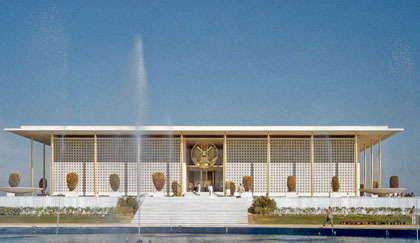
Edward Durell Stone, United States Embassy (1954), New Delhi, India. Image source.
Architecture critic Paul Goldberger called it “one of the best‐known pieces of American architecture of the decade” (1). The success of the United States Embassy in New Dehli established Stone’s place as a major American Twentieth Century architect. It also led to important commissions such as the “John F. Kennedy Center for the Performing Arts in Washington, … the General Motors Building in New York, and the State University of New York campus at Albany” (1). “Business Week called him ‘the man with a billion on the drawing board’ ”(3).
“These designs fused the formalism of Stone's early Beaux-Arts training with a romantic historicism, … influenced, in part, by Maria Stone's Italian origins” (2). The couple took several trips to Italy during this time which “reawakened his interest in the classical and Italianate” (2) architecture. While Stone did not intend that his work copy classical architecture he hoped that his work would embody its timelessness. (2)

Edward Durell Stone, Koff Apartments (1965), Deerfield Beach, FL. Image source.
Stone becomes a Celebrity Architect
Edward Durell Stone’s work garnered him publicity both at home and internationally. In 1958 Time did a cover story on the architect. He appeared on many television programs, including Edward R. Murrow’s “See It Now.” Stone published his autobiography, The Evolution of an Architect in 1962. (5)
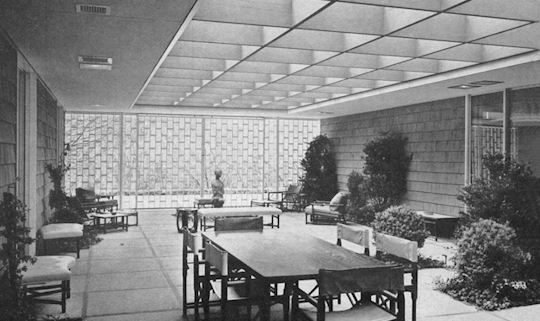
Edward Durell Stone, Carlo M. Paterno House, aka The Atrium House (1962), demolished around 2010. Image source.
Huntington Hartford Gallery of Modern Art
Stone’s later work “became more romantic and more highly embellished” (1), such as the Huntington Hartford Gallery of Modern Art built on Columbus Circle in New York City in 1964.
Paul Goldberger described the building as “an eccentric marble box on delicate legs with arches at top and bottom and characteristic Stone grill work tracery up and down the sides.” The structure's delicate legs caused many New Yorkers to refer to it as “The Lollipop Building.” In the mid-2000s the structure would become embroiled in a controversy over preservation.
“New York City's Landmarks Preservation Commission refused to consider its eligibility for landmark status” (2). Little of Stone’s original design remains after its renovation designed by architect Brad Cloepfil. (7)
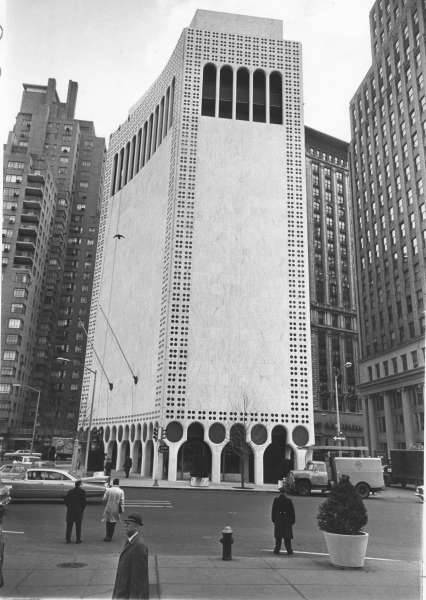
Edward Durell Stone, Huntington Hartford Gallery of Modern Art - Two Columbus Circle (1964). Image source.
Edward Durell Stone’s Later Work
Stone’s firm continued to “garner major architectural commissions”, and his later work includes, “the Standard Oil building in Chicago, Illinois (completed 1973); the First Bank Tower in Toronto, Ontario (completed 1975); and the Florida State Capitol in Tallahassee (completed 1978)” (2). His last residential work was the Sheldon Cohen House (1976) in Greenwich, CT. (3) Although successful, these later works earned more scorn than praise from the critics.
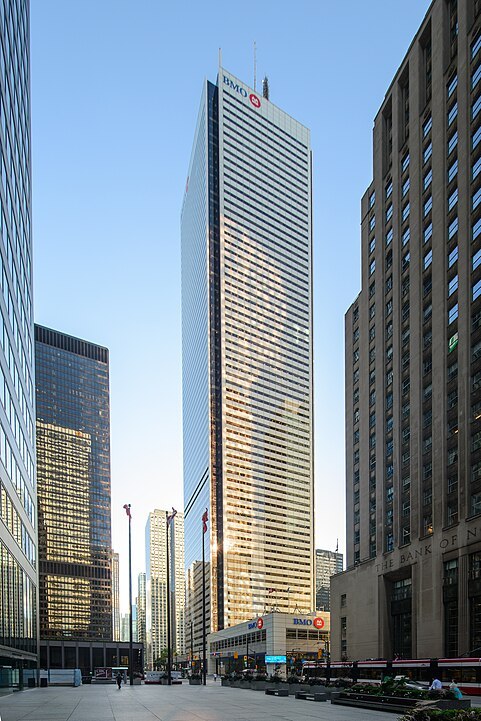
Edward Durell Stone, First Bank Tower (1975), Toronto, Canada. Photo credit: Arild Vagen. Image source.
In 1966 Stone and his muse, Maria Elena Torch, divorced. He remarried in 1972, this time to his executive assistant, Violet Campbell La Stella. The couple had a daughter, Fiona Campbell Stone…. Declining health forced Stone to retire from active practice in 1974.” (2) His firm Edward Durell Stone & Associates, however, remained in business until 1993.
Stone’s Tributes and Legacy
During his career Stone had several honorary degrees bestowed on him including one from the University of Arkansas in 1951. (4). Stone received numerous awards for his work including the Medal of Honor from the New York Chapter of the American Institute of Architects in 1955. He became a Fellow of the American Institute of Architects in 1958 (2). He won the Horatio Alger Award in 1971. (4) The Mullins Library at the University of Arkansas holds “an extensive collection of project and personal photographs in addition to a collection of architectural drawings and papers” (2).
Edward Durrell Stone died after a brief illness in New York City on August 6, 1978. (1) His career spanned five decades and encompassed Art Deco, the influence of Frank Lloyd Wright, Modernism, and his own unique decorative style of architecture, reacting against the cold International Style. As Paul Goldberger wrote, “Mr. Stone sought not to go beyond the International Style but to turn the clock back to a personal kind of modern architecture.”
References
Goldberger, P., (7 August, 1978). Edward Durell Stone Dead at 76; Designed Major Works Worldwide. https://www.nytimes.com/1978/08/07/archives/edward-durell-stone-dead-at-76-designed-major-works-worldwide-a.html
R. L. Skolmen and H. Stone, (n.d.). Edward Durell Stone: Life. https://www.edwarddurellstone.org/
Smart, G., (2024). Edward Durell Stone, FAIA (1902-1978). https://usmodernist.org/stone.htm
Wikipedia.com, (7 February, 2014). Edward Durell Stone. https://en.wikipedia.org/wiki/Edward_Durell_Stone
Edward Durell Stone, The Evolution of an Architect, (New York: Horizon Press, 1962), 92.
Britannica.com, (n.d). Edward Durell Stone, American architect. https://www.britannica.com/biography/Edward-Durell-Stone#ref81069
Goldberger, P. (18 August, 2008). Hello, Columbus. https://www.newyorker.com/magazine/2008/08/25/hello-columbus
3 notes
·
View notes
Text
Research
Conceptual Artist Michael Craig Martin
Born in Dublin in 1941. He grew up in the USA and studied Fine Art at the Yale School Of Art & Architecture. He has Lived and worked in Britain since 1966 and in 2016 was knighted in the Queens Birthday Honors for his services to art.
Vector Artwork
Computer Portraits- I loved the portrait he did of the instantly recognizable George Michael. He uses very bold neon colours that gave me flashes from the online colour seminar and Stuart Semples fluorescent pink powder paint. All very similar to Pop Art. But also giving me 'Simpsons' vibes.
Vector Artwork Continued
Computer Editions- I am taking inspiration from his piece 'Going' 2006. This time he uses inanimate objects. He picks the ones he sees as iconic or instantly recognizable and symbolic of different genres. They fade in and out and the background colour fades from one bold colour to the next.
Although I may not use such bold colours.
4 notes
·
View notes
Text
some collins siblings academia things:
as a boy, Roger was sent to boarding school at Phillips Exter Academy in New Hampshire. He was admitted to Yale, but was stopped from going with the onset of WWII (naturally, he had no intention of serving and managed to get out of the draft on account of his physical insufficiency and occasional homosexual tendencies). Instead, he returned home for a short while, and played reluctant assistant to his father and older sister while the US government's commandeered many of the Collins fishing trawlers for coastal service in the mosquito fleet.
At Yale, he belonged to Branford College "the oldest and most beautiful" of the residential colleges, where he studied business (as opposed to the liberal arts, which he would have preferred). In most respects, he embodied the Branford mien: "Chauncey Tinker commented that Saybrook was like an anthill, but Branford was like an oyster bed. In records of the time, the main thing that stands out about Branford is the lack of activity among its students, and lack of encouragement of activity on the part of Master Mendell, who commented that oyster beds produce pearls."
While at Yale, Roger dabbled in intramural fencing and polo, and as an upperclassman was tapped into Wolf's Head. he tended to frequent the docks as well as the armory, sailing recreationally with friends on many a weekend out to an island in the St. Lawrence river. his longtime Best Friend swam for the college; but the boy drowned, with his society pin still in his mouth. The incident put Roger off swimming permanently, though he would continue to have a fondness for the water - sailing, and fishing, and walks along the shore - the rest of his life.
Elizabeth, in contrast, was kept at home as a girl, but enjoyed the luxury of private tutors and governesses so that she was adequately prepared when she went off to Vassar, where she majored in economics (under Mabel Newcomer, who included sociology and anthropology within the curriculum) with a minor in architecture. her academics were stellar, and she was admitted into Phi Beta Kappa as a senior; she gives money regularly to her alma mater and to the society well into old age, though financial stress on the family has prohibited a donation large enough to see “Collins” written anywhere on campus.
Elizabeth was a member of her class archery team during most of her course of study, and was known to both swim and skate in Vassar lake depending on the season. while not a member herself, she tended to hang around the rowing team practices and enjoy the scenery. she frequented parties and hosted many, and was known as one of the best dancers in her year. she was a regular patron of arts, dramatic, and literary societies on campus: her contributions included a position as secretary to a literary magazine, and exhibition curation for both the department and student arts organizations.
unlike many of her pacifist classmates, Liz supported the US entering WWII. though she was never particularly outspoken politically, she helped ensure that the Collins enterprises, and Collinsport, were put to full use to the cause when she left school. (Which proved to be mutually beneficial: the money from the navy lined the Collins family purse, and vitalized the town economy)
6 notes
·
View notes